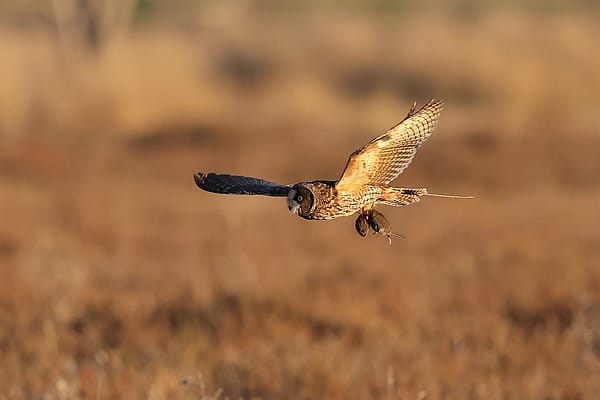
Birds and the Law
A question we are commonly asked is, “Can I have that feather?” when one of our birds drops a gorgeous feather in front of guests. The answer to this question is always, “Sorry, no.”
While it may seem rude or greedy of us to not share, there is a reason—it’s illegal to have these feathers without a permit. While most folks know they can’t have an eagle feather, far fewer know that all North American raptors are protected. In fact, almost all birds in North America are protected, making it illegal to possess their feathers.
But why is it illegal? Naturally dropped feathers can be found everywhere birds hang out.
Well, since the early 1900s, birds have been protected by several different laws for various reasons:
- Lacey Act (1900): Essentially, the Lacy Act is a conservation law in the United States that prohibits trade in wildlife, fish, and plants that have been illegally taken, possessed, transported, or sold. It was originally directed more at preservation of game and wild birds by making it a federal crime to poach game in one state with the purpose of selling the bounty in another. Today, the Lacey Act is used primarily to prevent the importation or spread of potentially dangerous non-native species. It now stands as one of the broadest and most comprehensive forces in the federal arsenal to combat wildlife crime.
- Weeks-McLean Act (1913): This legislation banned the spring shooting of migratory game and insectivorous birds and declared them to be under “the custody and protection” of the federal government. The act was quickly ruled unconstitutional, however, largely on the basis of states’ property rights over game.

- Migratory Bird Treaty Act (1918): The MBTA was created to combat over-hunting and poaching that was decimating bird populations. Interestingly, the enormous demand for birds was not for food, but for feathers for women’s hats (the millinery industry). The MBTA made it a federal crime to take birds or bird parts without special permission from the Secretary of the Interior. Only “native” bird species (birds that occur in the US or its territories as the result of natural biological or ecological processes) are protected, however. That means European starlings, Eurasian collared doves, Eurasian house sparrows, and rock doves (the common pigeon) have no protection under this law. Stated most simply, the MBTA is a law that protects birds from people. The law makes it illegal to kill or possess any part (feathers, eggs, nests, etc.) of birds native to North America without permits. This is the most important legislation protecting birds in North America today and currently covers 1,026 species.

- Bald & Golden Eagle Protection Act (1940): This act was proposed due to the drastic decline in the population of bald eagles by the 1930s. Congress recognized the need to protect the Nation’s symbol of freedom and liberty. Originally it only provided protection to bald eagles. Golden eagles were added in 1960, not because they were recognized as valuable but because young bald eagles, which look like golden eagles, were being mistaken for golden eagles and were killed. The act prohibits anyone from taking, possessing, or transporting an eagle, or the parts, nests, or eggs of such birds without prior authorization.

But if we don’t have the millinery trade any more and there are seasons to limit hunting why is it still illegal to have a feather? My answer to this is, “It’s an extreme law to protect the birds.” Although the major threats of the late 1800s to mid-1900s are no longer serious problems for birds, they still face dangers every day: habitat loss, electrocution, predation by domestic cats, poisoning (intentional and accidental), window strikes, collisions with vehicles, etc. etc. etc. It all means one thing—birds still need laws to protect them.

So who can legally possess feathers or parts?
- Facilities like museums, zoos, aquariums, and nature centers can obtain educational permits to have live birds, dead birds (taxidermy mounts), and/or parts to use for educational purposes.
- Licensed rehabilitators must have the appropriate permits to care for sick and injured birds.
- Falconers go through a rigorous process of tests and inspections to obtain a license and permits for falconry.
- Native Americans may have feathers or parts of birds for ceremonial use, but only if they are a member of a federally recognized tribe.

So… if you are not one of the people listed above, leave those lovely feathers where you found them. Besides, those dropped feathers will be reused in nature—perhaps as a liner in a den or nest to help keep other wildlife comfy and cozy.
Related links/sources:
https://www.fws.gov/birds/policies-and-regulations/laws-legislations/migratory-bird-treaty-act.php
https://www.fws.gov/birds/policies-and-regulations/laws-legislations/other-relevant-laws.php#lacey
http://www.audubon.org/news/the-migratory-bird-treaty-act-explained
Written By
Melissa Hill
While earning her Bachelor's Degree in Wildlife Management at the University of Wyoming, Melissa began volunteering at Laramie Raptor Refuge and was instantly hooked on birds of prey. Since those early days, she has worked with nearly 70 different raptors at four different raptor education groups in three states. She is a former member of the Education Committee for the International Association of Avian Trainers and Educators (IAATE) and a National Association for Interpretation's Certified Interpretive Guide. When she's not "playing with the birds" she enjoys spending time quilting, crocheting, and exploring the Greater Yellowstone Ecosystem with her non-bird family.











